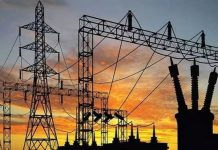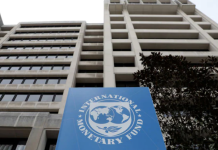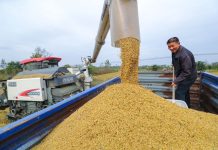DM Monitoring
JAKARTA: China’s trade with the Association of Southeast Asian Nations (ASEAN) in the first three quarters of the year reached 481.8 billion U.S. dollars, accounting for one seventh of China’s foreign trade, and bilateral trade grew 7.7 percent in the 3rd quarter, Chinese Ambassador to ASEAN Deng Xijun said.
“It grew by 5.6 percent in the second quarter and 7.7 percent in the third quarter, much faster than that between China and other trading partners,” the diplomat spoke at the Third Jakarta Forum under the theme of “Reinforcing Regional Economic Recovery amid COVID-19”, organized by the Foreign Policy Community of Indonesia (FPCI).
ASEAN became China’s biggest trading partner in the first half of this year, accounting for 14.7 percent of the nation’s total foreign trade volume, amid upgraded free trade area protocol and supply chain cooperation. During the virtual meeting, Deng emphasized that the trade between China and Vietnam even soared by 23.5 percent in the third quarter.
This year, China has already made 10.7 billion U.S. dollars of direct investment in ASEAN countries, up by 76.6 percent. “These figures demonstrate the strong resilience and full potential of China-ASEAN economic relations,” he said.
China and ASEAN had promoted resumption of work and production to boost regional growth. China has established “fast lanes” and “green lanes” with Singapore, Laos, Cambodia, Myanmar and Indonesia to facilitate the movement of personnel and people, connecting the lanes into a regional network, and resumed direct flights with several ASEAN countries. Deng said those efforts aimed to “stabilize regional production and supply chains, cultivate new growth models and business forms and thus inject stronger momentum in the economic growth of the regional countries.”
He also highlighted that China and ASEAN had worked more closely on projects under the Belt and Road Initiative (BRI).
The two sides have steadily pushed forward high-quality BRI projects and created more synergy between the BRI and the Master Plan on ASEAN Connectivity (MPAC) 2025 by overcoming difficulties brought by the pandemic.
“These joint endeavors are conducive to local economic recovery,” Deng said.
He noted that the projects under the BRI in ASEAN countries have been advancing steadily, with major progress in the China-Laos Railway, Indonesia’s Jakarta-Bandung highspeed rail and Cambodia’s Phnom Penh-Sihanoukville Expressway project.
The diplomat added that China had also reached important consensus with ASEAN countries on accelerating major projects, including the China-Thailand Railway and Malaysia’s East Coast Rail Link.
Next year will be the 30th anniversary of the ASEAN-China dialogue relations. Ambassador Deng expressed the belief that the two parties’ valuable cooperation against the virus and on regional economic recovery will usher the China-ASEAN relations to an even higher level. “A review of history shows that crises have never been absent for China and ASEAN, be it the Asian financial crisis, the international financial crisis, SARS or H5N1 influenza. However, China and ASEAN have withstood every test of the times, and our relations only emerged closer and cooperation stronger,” he said.
In an opinion article published on FT’s website, Ray Dalio, the founder, co-chairman and co-chief investment officer of Bridgewater Associates which is a U.S. investment management firm, said the anti-China bias “has blinded too many for too long to opportunities” in a changing world.
“The world order is changing, yet many are missing this because of a persistent anti-China bias,” said Dalio, noting that China is “succeeding in exceptional ways” despite some persistent doubt about the country. China has achieved some of the world’s lowest COVID-19 case rates, Dalio said, adding that over the past year, China’s economy grew at almost 5 percent, without monetizing debt.
“China’s extraordinary performance isn’t new…it has historically been one of the world’s most powerful countries and cultures,” he said.






